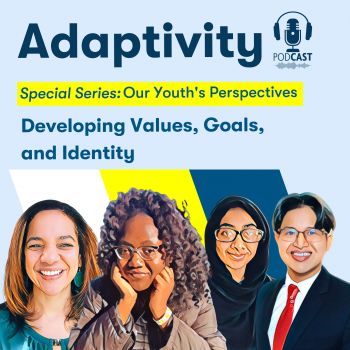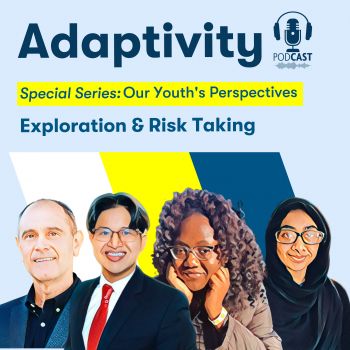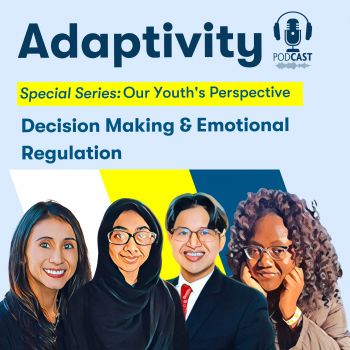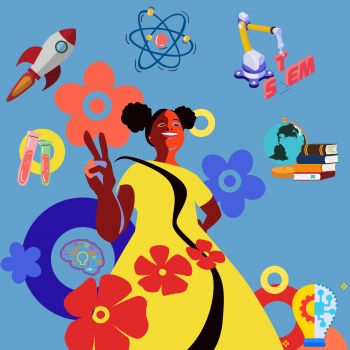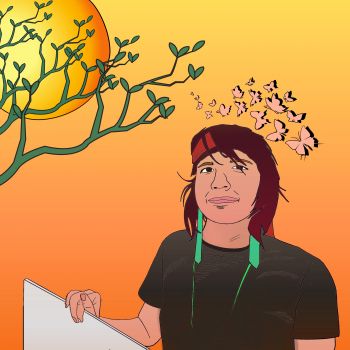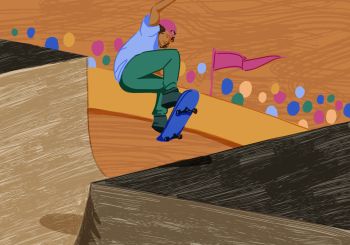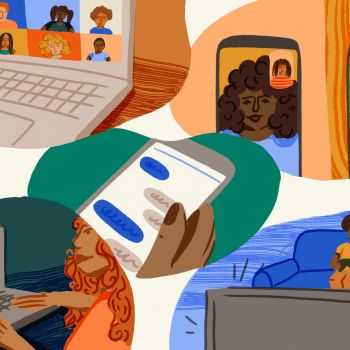Listen to this episode on iTunes, Spotify, or Libsyn.
Ron Dahl What does it mean to be truly, authentically engaged?
Sebastian Gaytan D’Amico I feel like when I’m working on something that I’m truly engaged in, it’s a very consuming. And it’s something I could spend hours of my time and not even really care. It’s something that I could become truly immersed and passionate about.
Ron Dahl Engagement rooted in curiosity and feelings of personal relevance sparks a kind of motivation that is markedly different from the drudgery of performing tasks for external rewards.
Brynn Santos I wasn’t doing it for a grade. I just had to finish it because it felt meaningful. That kind of flow feels like time disappears and I’m fully present in the process.
Ron Dahl New technologies like generative AI are changing our world–creating fundamentally new ways for youth to engage their curiosity, to explore information about the world, and to seek understanding and connection. Like so many revolutionary technologies have done previously, these will pose new risks and new opportunities.
Miles Stryker In terms of generative AI being used to further my own engagement on a subject, I find that it’s more fun for things outside of school, like: why do dolphins click like that?
*****
Ron Dahl I’m Ron Dahl, founding director of the Center for the Developing Adolescent, and this is Adaptivity, where we explore the science of adolescence, untangling misconceptions about the years between childhood and adulthood. We explore new insights into the rapid cognitive, emotional, and social changes that happen during these years. And how the developing adolescent brain is primed to promote healthy and adaptive learning.
In this episode, we’re talking about authentic engagement—the kind of deep, curiosity-driven and self-motivating involvement that comes from doing work that feels personally meaningful.
When we are truly engaged in an activity, the work may be difficult but it can feel enjoyable–and at times almost effortless.
This contrasts sharply with the feelings of drudgery or boredom that so often emerge when we make ourselves perform work for grades or to avoid punishment. Or as we struggle to persevere with tasks that don’t feel relevant to our own goals or interests.
Adolescence is a unique window of opportunity when we’re discovering–in deep personal ways–who and what we really care about. Developmental changes during puberty amplify our natural motivations for social connection and the desire to matter. We want to feel like we belong, that we matter, and gain a sense that what we are doing can make a difference to others and to the world around us.
This feeling of wanting to connect and matter can help to motivate us to engage in ways that promote exploring, learning, and mastering the things we genuinely care about.
So it is striking to find that the majority of young people report that they feel so disengaged from school right now–so many are coasting through these critical years, or working only for grades, or just not showing up at all. Why is that?
This question is becoming more urgent as technology is changing our world in ways we can barely understand. Artificial intelligence is creating new opportunities to support learning and engagement in remarkable ways. Yet, these rapid changes also pose new risks for subverting motivations for learning and personal connection.
So how can we spark authentic engagement in education? How can we harness adolescents’ natural motivations to connect and to matter? And how can we ensure that AI supports healthy engagement, learning, and social development instead of hijacking engagement for profit?
To help us think about these questions, we’ve invited the authors of The Disengaged Teen, a new book exploring how adults can spark the kind of authentic engagement that can help them learn the skills and capacities to thrive in this quickly shifting world. We’ll hear from them shortly.
But first, we’ve asked some of the young people we know and work with to share their thoughts about when they feel most engaged, and how they imagine AI could support or undermine authentic engagement.
Brynn Santos I think what makes me feel engaged is when I’m learning or creating something that actually connects to my life and my passions. I remember writing an article for the school paper on censorship in classrooms, and I wasn’t doing it for a grade. I just had to finish it because it felt meaningful. That kind of flow feels like time disappears and I’m fully present in the process. I think generative AI could either amplify that kind of engagement by helping us explore ideas faster or personalize how we learn, but it could definitely make us feel passive if we rely on it too much. It’s a balance. It should be a tool to deepen our curiosity, not shortcut a process.
Sebastian Gaytan D’Amico I feel like things that relate to me truly make me feel engaged. For example, stories or shows that have similarities to my life always really interested me and I feel inner motivation to pursue or learn things if it’s something that brings me happiness to my life and it’s something where I could really apply my skills effectively. Uh, some examples of this are like drawing art as well as storytelling. And I feel like when I’m working on something that I’m truly engaged in, it’s very consuming. And it’s something I could spend hours of my time and not even really care. It’s something that I could become truly immersed and passionate about.
Miles Stryker Something in school that really got me engaged to learn in our physics class specifically, our teacher would give us an introductory question during each unit. And most, if not all of us would have no idea how to do it. And then the teacher would say, okay, here’s how you do it and here’s why. And we would learn all the ideas and concepts over the next few weeks. Finding out how to do it just made it seem really fulfilling.
In terms of generative AI being used to further my own engagement on a subject, I find that it’s more fun for things outside of school, like learning something from school and being like, oh, that’s kind of cool. And then you search it up later, like jellyfish or something that you heard from a marine bio class and then like, oh, there’s this weird thing that’s not exactly a jellyfish, but it’s like it; it’s called a priadubia. And you just keep learning all this stuff. Or like, why do dolphins click like that? It’s fun for those types of questions where it’s like, what else?
Ron Dahl Thanks to Miles, Sebastian and Brynn for sharing their thoughts.
*****
Ron Dahl Now, we’ll hear from the co-authors of The Disengaged Teen: Helping Kids Learn Better, Feel Better, and Live Better. Jenny Anderson is an award-winning journalist. She joined us from her home in London. Her co-author Rebecca Winthrop is a senior fellow and director of the Center for Universal Education at the Brookings Institution. Here’s our conversation:
Ron Dahl Jenny Anderson. Welcome to Adaptivity.
Jenny Anderson Thank you for having me. I’m so excited to be here.
Ron Dahl Rebecca Winthrop, thank you so much for being here. I’m excited to have you participate on our podcast, Adaptivity.
Rebecca Winthrop Great to be here, Ron.
Ron Dahl I’m going to begin by asking a bit about how you are interpreting the response this book is getting, how many people from different walks of life have found this book really, really interesting. And the degree to which that’s tapping into something really powerful and important in our time, in terms of why so many young people are disengaged.
Rebecca Winthrop Whoof! Jenny, you want to take it first and pass it to me?
Jenny Anderson Sure. I feel like I’m going to tear up, and we’re just getting started. I think it has hit a nerve because I think a lot of parents are struggling a lot with their teens. So on a very human level, I think it is hitting the nerve in that it recognizes we’re struggling. We’re looking for strategies. We’re also looking for explanations like, why are things so hard right now? Um, what’s going on? And with educators, I think it’s really nice. People are saying that. Of course, they’re aware of these issues. This is, you know, engagement is not something that we’ve brought to their attention, but it’s giving them language which they can use in their classrooms, with their students and with parents and with each other. And that that brings some empathy to why kids are doing some of the things they’re doing, So, Rebecca, what would you add to that?
Rebecca Winthrop I would just say that I have recently come off of a day here at Brookings of convenings around student agency and student voice with a lot of young people and educators around the globe. Um, so it’s a nerve that’s been struck not just in the US but globally. And I also have found that young people themselves are really interested and find it helpful to reflect on their own process of learning.
Ron Dahl Rebecca, you talked about agency already and one of the really interesting, I think, important, arguments or um insights that your book brings out again and again in terms of solutions and addressing these challenges is how to promote agency. But before we can move to the opportunities, I would like each of you to talk a little bit about how to help people understand what we mean by disengagement and how looking at the roots and underpinnings and aspects of disengagement can actually help us identify ways to get traction and move things forward.
Rebecca Winthrop We identified disengagement in our research as behavioral engagement, emotional engagement, cognitive engagement, and agentic engagement. These are four dimensions in the academic literature that exist, have robust research. There are many more. The first three are sort of the centerpiece in the engagement researchers story about engagement. Everybody agrees about those. The last one, agentic engagement, has not really made it into the conversation deeply about engagement here in the U.S. but we chose that dimension because we think it’s absolutely essential for thinking about the world young people will inherit, including a world where generative AI is automating a fair bit of what life is about. And engagement is much more than just receiving what adults tell you to in school. It’s about proactively initiating your learning journey.
Jenny Anderson Did you want me to add to that?
Ron Dahl If you want.
Jenny Anderson Yeah, I guess I would translate it just into this is this is our sort of, hopefully our dual superpowers. It’s simply how we think, feel, act and are proactive in our learning. And I think engagement really is this secret sauce that is both predictive of good outcomes that we all want for our kids, but also is good for wellbeing, so it kind of has this, these two elements. So it’s not surprising that it’s sort of multi-faceted and complicated, but I do think being proactive sometimes doesn’t just mean consuming and conforming.
Ron Dahl Yeah. Thank you. And as both of you, I think are aware, part of the framework for our Center for the Developing Adolescent is not only the developmental science, how and why these issues become more salient in in the lives of young people as they move into adolescence, but also understanding some of the the brain development and neuroscience underpinnings of these processes.
So, taking that frame, I want to come back to some points that I think you’ve made really effectively in your book and in your comments since the book has come out, that in some ways, even though engagement is always an issue for people learning at any age, there’s a shift as kids get older and move from elementary school into middle school, or approximately in that period of time, when disengagement becomes a more frequent and common set of issues. Boredom and the dissonance of sitting in a desk and doing something that you don’t want to do, don’t choose to do, don’t see or feel the value in doing becomes a much more powerful and dynamic set of issues at some point in development, and I’d love to hear each of you talk or reflect a bit on how you think about this developmental shift that makes these issues become so much more important and and emotional for us as parents, teachers, and for young people.
Jenny Anderson I mean, Ron, you were very influential on us when we were doing this research. And so something that has resonated a lot with people that we talked to is this just idea of really trying to think about the developmental imperative of adolescence, right. It is separating from a caregiver. It is going out on the savanna and finding a tribe and finding a mate. I mean, when we really boil it down to that and how do we do that? By earning contributions, by being respected, by making authentic contributions.
When you really go that far up, suddenly adolescence and a lot of adolescent behavior that seems so puzzling in the moment makes so much sense, right? Sort of the wild conformity and the at times impulsivity and the palpable sort of desire to be noted, notable, you know, kind of noticed. You know, there is so much happening that should be happening. And then how do we harness the good in that and the opportunity in that? And still provide the guardrails so they stay alive. But I think that frame helps parents in those practical moments so much. Rebecca, what would you add to that?
Rebecca Winthrop I want to pick up Ron on your point about boredom. And I think there’s two types of boredom. The boredom in school is particularly painful, because it is a crisis of agency. Kids are stuck being bored. They want to do something different and they are not able to. They’re not given choices. They don’t have opportunities to really exert their, their agency. And we in education, I don’t know a single person who’s gone into education who didn’t go into education to foster exploration and excitement and interest of young people that just is there from when they’re born and gets bigger and bigger as their worlds get bigger and bigger. And so that is really hard for both kids and educators. And that is a different boredom from sitting at home and not having your phone to scroll on TikTok and saying, mom, I’m bored and having to go find something to do. Having to delve into your internal resources, your internal creativity. And that is a good boredom, actually. Good things come from that. And that’s because kids have agency to go find something to do that they’re interested in.
Ron Dahl Those are such great points. And I want to say two things about that. One is that the feeling of boredom in the second category is actually a positive feeling, because it motivates you to find something that’s interesting and engaging and explore. But the problem is, as you say in some school settings, there aren’t alternatives to activate that.
I also wanted to share a small epiphany in my life when I was moving from interacting in my research with clinicians interested in behavioral and emotional issues to education professionals and researchers. I will always remember this person, a former teacher, you know, researcher looking at the data, and he was talking to his colleagues and he said, you know, “the fifth grade slump” and “the eighth grade cliff.” And I said, so what are those terms? And he said, well, you know, kids that were kind of engaged, they’re beginning to slump in fifth grade. And if they fall off by seventh or eighth grade, they’re gone from the system. And it was like, that is when puberty starts. And that’s like when you’re fully into the intensity of the rapid changes.
And so when we were trying to understand sensation seeking and exploration tendencies that increase at puberty and align to what Jenny was talking about earlier–what’s adaptive to be able to explore and discover and find ways to contribute–the biologically increased motivation to explore and discover and navigate uncertainty and try new things, is likely to make you more bored without opportunities to do that. And so this match between these biological shifts that happen, and an increased vulnerability to feeling really bored in settings where you can’t explore relationships, which is what is so motivating – who am I in relation to these other people? And discover new things where you have agency. So, I’d love to hear you say more about how to take these insights about a tendency to be bored that can promote, you know, some positive things but often does not.
Rebecca Winthrop We’re very clear that the problem of student disengagement does not lie at the teacher’s feet. Educators everywhere are trying to teach their heart out, and they are squished from school design from the top and frankly, parental pressure from the bottom.
So on a school design question, when we talk about the fifth grade slump and the eighth grade cliff, from an educator’s standpoint, that corresponds with the top of elementary school, you’ve gotten to the top of the mountain in elementary school. You’re probably not as challenged. You’re looking for more social networks to grow into. You’re the top of the school, and eighth grade is right before you go to high school. So we have a problem where our structures of how we deliver education in most schools, I should say most schools, there’s many. We can get to this great examples on the margins, but most sort of traditional schooling models, are not aligned to adolescent brain development.
And we see this in the data too. We did this survey Brookings and Transcend, where we asked kids a bunch of questions about their school experiences. And in third grade, 75 percent of kids say they love school, and by 10th grade it’s 25 percent. And the biggest shift happens when kids enter middle school, which is where they’re looking for social connection. They’re beginning to look for meaning making. They’re beginning to do all the things you’ve talked about in your research that Jenny talked about, about trying to stand out and fit in, and we give them more anonymized schooling because they don’t have one teacher who knows them very well. We give them going from class to class, different subject to different subject. We don’t often connect these subjects to each other or to the real world, and it becomes sort of a chore that they have to go through. And they do have to go through. It’s compulsory, they have to go to school. So they have very little choice over it.
Ron Dahl Thank you. I want to follow up with this idea that if we’re going to promote autonomy or at least agency, freedom from autonomy, controlling them and so they can have individual agency. But in a chaotic, lots of young people with different ideas about how to use their agency, doesn’t that point to the importance for collaborative learning and group based learning, where they can be doing the social and emotional trial and error, figuring out how to work together, using their agency together? I’d love to hear you talk about how you think these kinds of approaches might be particularly important, given all the insights that you identify.
Jenny Anderson I mean, I would note two things. One, it serves two purposes. One is, um, this didn’t make it into the book, but some district in eastern North Carolina, which did a real very aggressive sort of school redesign, and they did some community empathy mapping before they did it. And so they’re asking everybody, what do you want school to look like? And the kids uniformly came back saying, we want to spend more time with our peers doing stuff that matters to us. And of course, the skeptic, the journalistic skeptic in me said, yeah, but then, like, they don’t get anything done, right. They’re just like, you know, no one’s staying on task, and, you know, how are you gonna get these projects on? How are you going to meet your curriculum standards? And they said exactly the opposite happened. Because they had a say in what they were designing. And it wasn’t the whole day. It was sort of this choice time, you know, this they had this kind of coveted time that they had designed, they had selected and they wanted to prove that they were going to get stuff done.
And I think the truth is they did want to get stuff done. They wanted to do the good work, they wanted to do authentic contribution, but they needed a feeling. They had to care, to want to do it. So I think it is, you know, both. Yes. They want to just be with their friends because that’s more fun than typically than listening to a teacher drone on. And they want to be part of the design of that. Right. And so I think we’re getting better at both recognizing that that is a desire of kids that we should meet, and designing it in such a way that hopefully teachers feel empowered to do it well so that they know that they’re accomplishing what they need to, which is a lot.
Ron Dahl So you used the word “authentic” a few times and feelings a couple times. And these are such important words in terms of what can be subtle but I think really crucial issues. And so authentic engagement is different, as you talk about in achiever mode, people can look like they’re achieving and meeting the needs of succeeding in school, but it doesn’t feel authentically engaging to them; it’s not the happy engagement. And similarly, sometimes parents and teachers can say the right words to encourage, but it doesn’t land in ways that feel authentic to young people.
Ron Dahl And so I’d love to hear you share some thoughts about how do we attend sufficiently to these subtle–it’s a shift in what the priorities are. Because when you’re planning a school strategy, and people who are the teachers know this, they probably know this much better than the scientists. But, yet, how to incorporate this into the way these learning experiences actually happen. How do we help promote these authentic versions of engagement and authentic feedback that generate the kinds of feelings that make the difference for young people?
Rebecca Winthrop Well, the first thing that we have to do as educators is give them authentic work where they actually can contribute. We heard from so many young people that, at least for some of their classes, for part of the time, they were bored to tears. And it’s not necessarily because they had a bad teacher, it’s because they came into class at the beginning of the year and two months in, they were at grade level. And the teacher has to focus on the kids who are not at grade level to get them up to grade level, everyone up to grade level. That is actually what teachers are told to do.
And so what about the kids who already mastered this stuff? And they talk about, well, I’m, you know, doing my homework. I’ve talked to lots of kids who said, you know, I try not to use ChatGPT to cheat, except when I totally know all the problems in the math set. Like it’s just a waste of my time. Like, just stick it in ChatGPT, it does it and spits it out. Cause, actually, I already know this stuff. Like I really don’t need to practice.
So we need to give kids opportunities to authentically contribute and do real stuff that stretches them is the first thing. The second thing is we were very clear in our book, and particularly drawing on educators here and people who work with educators around student engagement, is that educators should not fall into the trap of thinking that you incentivize engagement through jellybeans and rainbows and sunshine and gold stars and, you know, glitter and whatever. It is not about earning points or prizes or any of this stuff. Engagement comes from doing real, authentic work, being supported to do it, and feeling like you’ve accomplished something and that it’s worthwhile and it’s meaningful. And any good educator cares about that and tries to do that within the confines that they often are faced with.
Jenny Anderson I would just add to that what we saw and what we heard from young people is so often the authentic contributions happened outside of school, but school could facilitate it, so school could facilitate an internship.
There are plenty of school models that are doing this or doing it very well. And when kids get that opportunity to go have that contribution affirmed by someone else. You know, Ellen Bratton had this great quote to me. She said, you know, the difference between a kid who does some volunteering to put it on their college application and get in, versus the kid who works in an ice cream shop and has to clean the counters because if they don’t clean the counters, their colleague has to clean the counters, and their colleague is going to be pissed off at them. And that is the kind of feedback loop that is teaching them about authentic contribution. Even though the contribution in our minds is wiping down the counter, like, that’s not going to get you into college. Oh my gosh. But what is it teaching you? What are you feeling? To your point right. You’re feeling like I’ve taken care of this thing. So I’m very much on board with this point.
Ron Dahl I really want to circle back to some of the implications of what you’re describing. And this fits very much with the neuroscience. First of all, when we say we want to promote agency and some level of autonomy and choice, some people could imagine that means that young people are going to take it easier. They’re going to avoid the hard stuff. And I think as you mentioned in one of your examples, that doesn’t fit the data. They often will choose something that’s harder and more challenging. And part of the learning is you know, whether it’s the learning pit metaphor or distress tolerance or whatever, whatever way to frame it, learning how to navigate and manage discomfort is a really important thing they need to learn.
And I think sometimes parents and teachers worry that if we give them too much choice and autonomy, they’re not going to learn how to struggle through the difficult math problem or struggle to solve something that if they give up, they’re going to fail to learn. And you highlight this with some of your work, just shifting them into a frame that, of course, feeling uncomfortable is helping you. That’s part of your body’s reaction. So are those feelings, those feelings of uncertainty or the feelings of feedback from someone who disagrees with you or was disappointed, all of those are valuable parts of learning. And you do such a wonderful job in your book describing the components, the research and giving examples of educational systems and parenting approaches that can really promote this, as opposed to people avoiding as soon as they’re uncomfortable, as if that means something’s wrong.
Rebecca Winthrop We really drew on the research around parental meta emotional philosophy. So this idea of how parents feel about feelings. Do they think they’re bad things to get over quickly and save their children from feeling them or good feedback to learn from, which is basically what you just described, Ron, is really important for how parents at least can support their kids in motivation and engagement, in whatever activity it is. And so we do give lots of examples in our toolkit in our book, which we have an engagement toolkit around how parents can be more emotionally coaching versus emotionally dismissing. And it’s very interesting to see the links between just that mental headspace of a caregiver, of an adult, what that does for all sorts of outcomes for kids, their wellbeing, their mental health, their engagement in school, their motivation, their grades, their ability to self-regulate, their behavior incidences, etcetera. What would you add, Jenny?
Jenny Anderson More commentary on the moment, which is I hear this on all sides from teachers, from parents, from mental health people, from the CDC and the data like it’s in the data. It’s anecdotal. Kids are much less able to tolerate discomfort, and parents are really unable to tolerate discomfort of their kids, but of themselves as well. And so we definitely have a big challenge here. And I think it’s one that Rebecca and I feel strongly about in writing the book, which is trying to give parents permission to let your kids struggle. Right. And acknowledge that that’s hard. I really am struck by how much parents are suffering right now or really struggling right now. We wrote the book because we knew kids were struggling, and I think a big takeaway for me is, Oh my gosh. I think I see a real sort of multiplier effect.
Ron Dahl Absolutely. I mean, this is a deep and recurrent theme that we at the center and many of us who are doing work in this area, whether it’s clinically or is for population health is how to improve young people’s navigating big feelings and difficult feelings in positive ways and recognize that that’s positive. Lisa Damour has made some really wonderful commentaries and descriptions of this as well, including on this podcast about how to shift this, not to say bad feelings are good, but rather, you know, reframing these issues.
I also wanted to say that you did a wonderful job. One slice of this, in terms of how parents can support this, is explaining both the science and a practical approach to moving from nagging to autonomy-promoting. And I’d love to have you talk a little bit about how that’s both a wonderful example, but it’s also a metaphor for, I think, a lot of other aspects of how well-intentioned motivations to help are actually undermining or interfering.
Rebecca Winthrop Jenny, this is your favorite study. Ron, it’s your study.
Jenny Anderson [laughs] I was like, this is, talk about discomfort! Discomfort is having to explain to a scientist his own study. But I’m going to give you the layperson version, just in case.
Rebecca Winthrop I just want you to know, Ron, that in every podcast we do, she says, Jenny says my favorite study in the book, and she cites your study.
Ron Dahl Well, it’s not my study. It is a group of people who are an incredible team. Playfulness aside, this team started off interested in clinical issues of the sensitivity to social criticism, including kids with anxiety and depression. And so, I think one of the things you, Jenny and, and your book together, have done is helped other people understand the implications of this reaction emotionally, which is so counterproductive in this virtuous or this vicious spiral that can happen. So you have developed the insights for explaining these findings.
Jenny Anderson It turns out that when teenagers hear the voice of their mother–and of course it was the mother that was chosen for this recording–being critical of them, so when they hear that critical voice, it does not activate the problem solving part of the brain. Right? It sort of shuts it down. Nothing’s happening because the force field’s up. And so our job is simply to nudge in every way we can to get the force field down, to keep it down. I mean, it’s the simplest phrase: connect before you correct, right? If you want to have influence, you have to be in the door.
And so what I love about that study is that it just shows what we all know, which is it [nagging] doesn’t work. Yeah, we really don’t want to be nagging by text when they’re off at college: have you done your chemistry!?!
Rebecca Winthrop One of the things, Ron, we, we try to do in the book is, you know, give an accessible story about the science and then give very practical things for people, particularly parents and educators, to do in replace of what their normal behavior is, because it’s one thing to say, don’t do this. And it’s another to say, well, what should I do?
So I have reformed my own nagging approaches. I have two teen boys, and we talk about the nagging procrastination loop from hell, which is usually around homework. It could be about anything that I myself have been stuck in, which is, “Did you do your homework?” You know, before dinner. After dinner, “Did you do homework?” Are you going to bed? “Did you do homework?” And, “Yeah, sure. Later. Maybe. Uh-uh, mom. Yeah, whatever.” And then they just feel worse for it and replace it with a learning to learn cycle, which is the virtuous version, which is let’s help kids plan how to approach their learning. So, “Hey, do you have homework?” is my new trick. “Yeah, I’ve got homework.” “What’s your plan for getting the homework done?”
Ron Dahl Yes, I want to zoom in on a couple things in the examples you were talking about. It starts with Jenny, your phrase, which is easy for people to remember: connect before you correct. which means prioritizing the feelings of connection before you give the information of what they did wrong. And I think this idea that relational, the relational space, that feeling connected to your teacher, to your school, to your family, to the individual providing feedback, why do you care about cleaning up the counter at the ice cream bar? Because you probably care about that peer at some level,
And so you’re going to attend to feedback differently. And I think sometimes just as we can think of emotions or feelings as squishy, hard to measure things, relationships seem like a vague category. And yet they’re at the heart of how that information becomes personally relevant, personally significant. Engagement is related to those feelings of significance and personal relevance that are created through relationships. And you address this in many ways at various points in your book, and it becomes super amplified as we start thinking about the role of AI. Because AI is an incredible set of tools to promote agency, autonomy, summarizing information, developing writing skills. And if it displaces or disturbs relational space, it could be really counterproductive. And yet if it can scaffold young people’s experiences for learning together, for collaborating, it could be a really powerful space. So I would love to hear you talk about a range of things. One is in terms of schools and the importance of relationships, not just peer relationships, but these feelings of connection and relational learning. And then second, you know, thinking about this, the rapid revolution of change that’s coming and is happening with AI.
Jenny Anderson Yeah, there’s a character that we love. We loved all of our characters, of course, in our book named Stella. And she, I think, really aptly displays that these are very fluid modes, and that kids move in them, move around them based on how they feel that day, how competent they feel in that class and their teacher and their peers in the classroom. There’s so many things that contribute to this, but what was fascinating about Stella was she had a chemistry teacher who was so bad that she ended up having a panic attack. He shut her down in such a way that she felt boxed in and genuinely panicked, right? This teacher and what she learned to do in that class was to get on her phone and shop, because it was self-protective.
Shift to French. This teacher had been the teacher where the girls dropped off their bags, you know, when they came into class in the morning and they talked to her, and she was interested in their lives and they felt it and they responded. And she put everything into French. And I can tell you, I don’t think that this was a kid who was just hell bent on learning French. She was responding to the affection and interest of that teacher and put it into her French.
And so I just think, yes, 100 percent, I think the relationships, and I think my excitement around technology, which is pretty far down the line in front of all of my many, many, I think, quite legitimate fears is that some pieces of teaching and learning can, AI can help us with that, to free up the teacher, you know, not to be a babysitter, not to be a coach. But to allow for those relationships to then underpin all of that expertise, to supercharge the learning.
Rebecca Winthrop So Jenny mentioned the modes of engagement. And, Ron, I don’t think we’ve gone over them yet, actually. So let me just play it out really quickly, because it’s actually a big finding from our book that people have found to be incredibly helpful. And it relates to AI.
So we found that kids engage in four modes, which is passenger mode. They’re behaviorally engaged, but not much else. These are the coasters. They go to school but have dropped out of learning. Achiever mode, which is what it sounds like. These are the kids who are trying to be great and get gold stars on everything put in front of them. There is an underbelly, dark side when kids are in unhappy achiever mode and become very fragile learners because they actually do not take risks, do not follow their interests because they want to keep the good grade. There’s resister mode, which is when kids are avoiding and disrupting their learning. This could be anything from class clown to not doing a homework assignment to being disruptive in class all the way to chronic absenteeism, which is a very large problem in our country. And explorer mode.
And this is where kids really love learning. This is where they have agentic engagement. This is where curiosity meets drive. They have an opportunity to explore. And these kids actually get better grades, better mental health. And they are being prepared for a world of AI. And we found that actually less than 4 percent of kids in middle school and high school, when we asked them about their experiences in our big survey of over 65,000 kids with transcend said that they regularly get a chance to explore in school.
So take that context. Introduce AI that is student-facing AI, not teacher-facing, student-facing AI into the learning process. And my big concern is if you don’t change pedagogy, if you don’t change what we’re asking kids to do, disengaged kids are going to use it to coast and be in passenger mode. And in fact maybe more kids will be in passenger mode. What we really want is to use it to help kids be in explorer mode. And it’s not going to happen automatically. And it’s not going to happen by ChatGPT, you know, just being out there in the world and students using it, we have to design for it.
Ron Dahl There are a few things I want to zoom in on. One is, this idea of promoting explorer mode. In fact, sometimes you talk about an explorer moment, and the goal here isn’t to change young people from their personality tendencies, but rather to promote a mode of being and how certain kinds of learning opportunity spaces can promote that explorer mode. And certainly a tool like AI-based ways of getting all the information in the world summarized in complex ways, could be an incredible way to explore whatever you’re interested in. Keeping young people away from this and trying to monitor for cheating is not the strategy. How to promote healthy, valuable learning of these tools, not only because that’s going to create skills they’re going to need in their lives, in the way the world is and is going to continue to be, but also push the design of these tools to be helpful for the kinds of value based learning experiences and relational in the loop kinds of experiences that have to be designed in, or else they just become another way to distract yourself with entertainment or novelty or rapid changes in what you’re doing, not as the healthy version of boredom you were describing earlier, Rebecca, of finding interesting things to learn and engage with, but just to avoid the uncomfortable moments.
You have so many examples you’ve been interviewing and interacting with so many people trying to innovate in these spaces. What would you want to shine a light on in terms of priorities to move forward in a positive way in this space?
Rebecca Winthrop I can start and take a stab, because we started at Brookings at our center, and I’m chairing it, a Brookings Global Task Force on AI in education, doing a pre-mortem, which is we don’t need to wait for 5 or 10 years and say, oh, some parts of AI, when you unleash it on education without thoughtful design, didn’t go well. We know this from social media, and we should figure out what are the risks and try to identify how to mitigate those to harness the positive pieces of AI. And so that’s an exercise we’re in the middle of. And we don’t have a definitive answer yet. We’re really in the middle of the research.
But what we should do is think about how can you use AI in the teaching and learning process, both for educators but also student facing, so that young people can more easily develop knowledge and then try to apply that knowledge together in groups or alone, and share it with each other to solve a problem in their community.
And there’s lots of examples of that. There’s–on the margins, there’s innovative school models on the margins all around the US and frankly, around the world that are doing really interesting things. There’s people at, this is university-level, ASU, who are doing virtual reality in biology 101 classes with Dreamscape, you know, incredible film designers. And that just sparked interest, understanding kids are doing so much better in biology 101 across the board, and they’re moving on to other subjects.
There’s other examples where kids are shrinking the time that they’re doing knowledge acquisition work, and through AI tutors that are more engaging could be predictive AI. It doesn’t even have to be generative AI. They’re really getting the grounding and sort of academic basis reading, writing, science, history. And then that frees up time during the day where they’re really doing group projects together with teachers, guiding them on things they’re interested in: building a new bridge.
Or financial literacy, things they care about or play, recess, you know, get out there, play sports, move your body, and, you can learn all sorts of incredible skills that we want them to learn around communication, interpersonal problem solving through things outside the classroom like we’re playing on sports or in model UN.
Ron Dahl Thank you. Those are great descriptions. I want to push us in this space a little bit. As we think about, you know, the fast moving, accelerated set of changes going on in the world and how to prepare young people with educational goals, might we want to shift away from–and it’s not the word “knowledge,” but when we talk about what we want them to acquire. And I’m thinking, Jenny, about your last example. If we really value critical thinking, communication skills, collaboration skills, giving and receiving feedback to each other, what’s harder? Giving and receiving feedback can be the most powerful thing, like how to help young people learn how to accept helpful feedback and give each other helpful feedback. Develop trust. These are relational skills. It’s how to think more broadly about collaborative learning among young people who want to learn how to give and take help in collaboration and feedback from each other as key priorities for the learning.
Jenny Anderson This is a little, a little bit adjacent, but I think relevant. One of the things I worry about in watching some of these AI tutors is that they’re incredibly accommodating, which is of course wonderful and maybe very motivating. But guess what? Humans aren’t. And if kids need to operate in the real world, they need to learn with sticky humans. They need to actually learn that when their teacher is giving them feedback, it feels like criticism and deal with that criticism and then decide over time whether that was actually criticism. That is literally part of growing up.
So I am, I mean, obviously sort of, you know, intimacy with an AI that is forever compliant and will do whatever you want that is not going to teach you the skill of having a human relationship where someone is not compliant all the time to sort of your whims and your personality. So this idea of shaping something to be totally responsive to you all the time is both very exciting and utterly terrifying, because that’s not how human relationships work.
I would also say, and this may seem contrary to some of the things we’re talking about, but one of the interesting things I have observed in this country [the UK] being in an extraordinarily exam happy country, is that it is really motivating and watching what kids do in these final months–It gives them a sense of confidence and they are doing something hard. And when they get to the other side, wow, the sense of accomplishment of what they have done. And so again, it is all moderation and balance. But I have been so adamant that it was sort of too much, too content heavy. It’s two years worth of content, and then you just regurgitate it all over two months in this, like super high stakes exams, and at the same time, I am watching an entire cohort of kids sort of step up in a way that is kind of remarkable.
Ron Dahl I think that’s absolutely central to so much of what we’re talking about, Jenny. Because what I want to go back to is, when we talk about motivation, and this is just as applicable to sports. When you have a big game, or when you’re doing drama and you’re on the stage performing, like dealing with the stakes being turned up, the dial up, gives you feelings of motivation. Learning how to master those big feelings–being scared. That’s where the thrills are. I mean, there are no thrills without high stakes consequences. And adolescents, the reason they’re bored is because they’re more thrill seeking. They’re naturally having proclivities to master their fears and do heroic acts. That’s part of what was probably adapted for most of human history - the ability to do something courageous to benefit others and as well as gaining an admiration. That’s what adolescents are good at learning. Not that they’re good at doing.
So without high stakes challenges, where do they get the feelings of motivation? If they just stay low-levels of arousal for long periods of time, when is it worth the effort? And, aren’t there healthy ways to do this, versus counterproductive, motivationally draining versions of it? And I think that’s the art of this. And so the ability to bring these values into the design of how technology can help–not to always tell you what you want to hear, as if that’s going to create a relationship that has value, but to have these learning experiences.
Jenny Anderson Absolutely.
Ron Dahl So I would love to ask each of you to reflect on what you think may be the most important thing to keep in mind, given all these insights and the challenges and the importance of engagement and supporting the adults to support young people in engagement.
Rebecca Winthrop I think the most important thing we can keep in mind adults who interact, care for, have children, or teach children, is that kids want to be engaged. They are desperate to be engaged in meaningful things and make meaning of the world around them. And all we really have to do is give them the opportunity to do so.
Jenny Anderson I think I would lean into the struggle as where learning happens, and that we have to stop rescuing our kids from struggling. I think of myself as a bit of a hardass, but in fact I’m a total softie as anyone who knows me, and I really do not like seeing my kids suffer. And it has been, it’s a sort of daily thing. I just have to keep remembering that this, with their independence and their autonomy and their struggles–struggle is where learning happens.
Ron Dahl And, if we step in too quickly to rescue our kids, because it’s so painful to watch them struggle, are we undermining some of those learning opportunities? So could it be the case that struggle is where certain kinds of engagement happen?
Rebecca Winthrop One of the things that I wanted to add to this conversation is that when we interviewed kids who are in explorer mode, they didn’t say I was just happy and blissful and didn’t feel stretched or challenged, but they were motivated to figure it out. Being in explorer mode, building explorer muscles, you don’t get that from not being challenged and pushing yourself. And that’s what we want for kids. We want them to spend more time in explorer mode, so they build these explorer muscles so that they can go out and point their interest towards things that they want to accomplish. You know, that’s agency–identifying a goal that’s meaningful to yourself and having the skill and will to get there. So that is often triggered in young kids in school by this idea of finding their spark. So when kids find their spark, it sort of draws them into explorer mode. And they develop these habits of mind and skills and resilience that you talk about, Ron, that can be transferable to other contexts down the line.
Jenny Anderson And maybe the main role of parents is to not get in the way of the spark. So when you see the spark, try to notice it. You know, sometimes we miss it. I missed, I had–we’re a sporty family and I totally missed it. I had an artistic kid for like four years, literally like just missed, and then, so notice, do better than me and encourage, right, encourage and scaffold as best you can.
Ron Dahl I just want to say I’m so thankful, you know, Jenny and Rebecca, this has been an amazing conversation. It’s addressing such compelling issues that are just creating so many challenges currently in society, and we need more help identifying the positive paths forward. And I’m just so grateful for your book and your insights as you’ve been expressing today in these conversations about promoting the positive aspects of helping to engage young people more effectively. So thank you so much for your contributions to Adaptivity.
Jenny Anderson Thank you for having us. And thank you for all of your tremendous support on this project. Ron, you have been such a champion of this book. Coach, champion, expert, so many things. So I just, I want to reiterate for both of us how grateful we are for that support.
Rebecca Winthrop Hear, hear; thank you so much.
*****
Ron Dahl I caught up with Jenny again, because I wanted to delve further into issues on Artificial Intelligence and engagement. AI is THE elephant in the classroom, so to speak, and I wanted to get at some of the nuance in ways that go beyond the headlines. Here’s our conversation:
So I’d like to come back to this idea of engagement and different modes of encouraging engagement and bring in this set of considerations about AI and how I can, in some ways, potentially increase engagement. And can interfere, undermine or displace, the kinds of, learning experiences. And I’d love to have you start thinking out loud about the ways in which we should be thinking about these rapid changes from AI and related technologies in terms of this goal of being more effective at engaging young people in these learning environments.
Jenny Anderson I have two sets of concerns. One is in the area of sort of cognitive development. And really this even more specific than that, this ability to sort of struggle and do the hard work of learning. And I do think that these tools, generative AI tools, are making it so easy to do so many of the hard things. Write an essay, write a first draft, answer a question, come up with a summary so I don’t have to read it. Come up with the questions. You know there are and I’m sure we’ll get to this, very good uses of it. But, I do worry that kids are often looking for shortcuts.
And so in the parlance of our book, we have these four modes of engagement: passenger, achiever, resistor, explorer, and passenger mode is sort of–more than 50 percent of kids told us that’s how they turn up for their learning. And I am really worried, genuinely worried, that these tools will enable more kids to spend more time in passenger mode. And obviously what we want is to see more kids using it to get into explorer mode, to expand, to have some agency, to have real engagement with these tools. And the other one is just, the role of technology and potentially replacing relationships. And that as we know, middle school and high school is, it’s a very awkward time for relationship development. And are we going to use technology to displace the hard work of learning how to be in communion with people, just talking, having conversations, being awkward, all of that stuff?
Ron Dahl Thank you. I would like to unpack each dimension that you outlined. And let’s start with the cognitive and effortful dimension. And I think two things about that. One is as you’re describing, the process of learning, even if we call it a learning journey, rather than just getting the answers or getting the draft, involves very often trial and error learning. That’s so much of the learning. It’s not just getting information and storing it. It’s figuring out how things go together and making mistakes. And we know a lot about learning systems in the brain that making mistakes is where so much of the action is occurring. And sometimes it’s discovering unexpectedly that things fit together.
And so the learning journey involves a lot of dynamics, not just effort, but these unexpected feelings that get activated. And if we shortcut the learning journey, whether it’s passenger mode or even achievement mode of just rushing to get the answer to create the performance as opposed to being on a learning journey. I think that’s one dimension.
And then the second is: learning how to adjust our effort. Part of figuring out how to do complex, goal-directed tasks is when do we turn up the effort and when do we turn it down? It’s like everything else, if we don’t practice using effort strategically, these are just skill sets that are not going to be developed the same way. And so I’d love to hear your thoughts on those aspects.
Jenny Anderson Yeah, I mean, I’ll share a personal story. So I was out to dinner and I got home and my daughter, she was 14, she was grappling with this sort of independent type project. She was asked to write an essay on a church group or a religious group, and she chose the Mormons. And she had been struggling. She had sort of read some stuff and she hadn’t read enough and done enough work. That was the challenge she faced. And I suggested to her, before I leave, she’d do a little bit more, a little bit more reading and that that might help her structure her thoughts more.
And, she, when I got back, was very excited because she had asked ChatGPT to develop a first draft for her, and it had all sorts of really interesting thoughts that she had not come up with herself. And she was so excited by this. It was really lovely to see. And I was very careful how I approached this, because I was internally terrified. And I said, yeah, it really did come up with a lot of new ideas, new content, and it framed it beautifully. And, you know, how did that help you? What did you learn from that? And there was this kind of aha moment of, “Oh wait, I didn’t do anything, right, and I read it.” And she got a little defensive and said, “Well, I mean, I learned it because I read it.” And I said, “Okay, well, so just tell me a little bit more about one of these points.” And so I was trying to put it back to her.
And she realized she hadn’t learned it.
And so it was a very tangible example. And so I also waited and reflected back to her like, hey, that was cool. It’s amazing to see what it can do, but then what you didn’t do, right and what you didn’t have to do. And what did that feel like? And you didn’t have that aha moment. And I think getting to your point of sort of the feelings that get activated, she was in an aha moment of, wow, the technology did it for me. But that is a different moment from the “Aha! I figured it out.”
And so it was just a very visceral experience, I think, for both of us in realizing the power of this technology. And so then that ends up back on me a little bit and on her school a little bit to then put up those guardrails. But it’s just so tempting and it’s so easy and it’s so much better than a 14-year-old brain, you know, what it could do versus what she could do. She could see that. And she wanted to be at that higher level. So, it’s a bunch of complicated things to explore there.
Ron Dahl So, thank you. That’s a great example. And just to add one way to think about that example is at the level of insights. So one is getting the information and being able to explain what this, you know, religious perspective creates. But the insights that came through when she read the ChatGPT version, were interesting to her. It’s like, wow, but when does she internalize those insights?
And this leads me to actually another angle on this, this how to make it more likely that it is the deeper learning actionable insight level learning is this ability to be able to explain to someone else what you learned or the new insights that you have. And we’ve all had that experience. We think we understand something, and we go to try to explain to somebody and go, oh, wait a minute, I don’t understand that. And so this idea of collaborative learning, I mean, the idea that individuals who are going to be using AI as an amazing tool, but then coming back together in groups and explaining to each other, what did they learn? And if that doesn’t land, if in their explanation, the person listening to them, as opposed to reading the ChatGPT version—which brings us to the human-human interaction. Sending and receiving emotional signals.
So much of the trial-and-error learning, especially in middle school and high school, is trial-and-error learning about self and other and interacting and developing trust, and if technology broadly, and AI specifically, displaces that, if individuals are having personalized learning where they are spending most of their time interacting with a bot, or, or a screen, it will increasingly displace this incredibly important emotional learning. So, I’d love to hear your thoughts about that–what may mitigate that or actually enhance that.
Jenny Anderson Project-based learning has been really tricky for a lot of teachers; collaborations don’t always work well with adults. They definitely don’t always work well with young people. And I think one of the exciting things is, is more research is coming out saying—the George Lucas Foundation did a very long, very well designed study on project-based learning to say when it is designed well, when young people have the opportunity to participate and the space is made for all of them to participate in. It’s not just the super smart, ambitious kid who’s taking the whole project on, and everybody sort of falls into the distance, that it works. I think when designed well, it can do better.
And so AI is this great tool to help with that, to help make project based learning better. And then teachers sharing their practice through that, I think is extremely exciting. Because a lot of it is just ideas–you know, what is an idea for a project that is going to animate this? And what’s the project that makes sense to me and to my classroom and my context and my kids’ culture and the environment around them and their neighborhoods? And AI can be the tool to do that.
Ron Dahl I just want to ask you just one more open ended question. Are there other thoughts in this space or reflections that you might want to share?
Jenny Anderson Yeah, I think I’m very struck in this moment by, you know, we wrote a book about engagement, and we thought a lot about agency and how important it is for young people to develop a sense of agency, this sort of capacity to recognize what they care about and go after it and have multiple strategies and marshal resources. And what I’m really struck by is how individualistic we framed that as, and how I’m super excited about really reframing agency as a collective endeavor. And how do we design learning experiences for young people such that in community with other kids, in community, with their neighborhoods and community with churches, they are finding ways to develop agency.
Because I think there is this mutuality of, we think a lot, maybe some people think if we just have a nation of super successful strivers, you know, the social fabric of the country will be fine. Well, that is clearly not the case. And we need to be doing more of this weaving and integrating. And I do think that that can develop agency and unlock agency. And I think it can be socially nourishing. And in a moment when AI is coming at us, it is helping us claim our human ground and say, this is where we sit and this is what is essential to us. And yes, we will take your tools, but no, we will not replace what is so core to being human and growing and loving and being in communion with people.
Ron Dahl Thank you so much for sharing your wisdom and insights and raising some really provocative questions for our paths forward.
Jenny Anderson Thank you. I always learned so much in conversation with you, and it is a pleasure to talk to you as always.
*****
Ron Dahl We know what sparks authentic engagement in young people. Giving them the agency and opportunity to pursue subjects and goals that feel meaningful to them, with real impact on people and the world around them. That’s an important place to start. Research tells us that very often in adolescence, those activities and goals that feel most compelling involve connecting and working with others. Relationships are so often crucial to personal experiences that create authentic feelings. Authentic feelings of caring, and being cared about, can transform motivations. Finding new ways to matter to peers and to adults that matter to them and to the wider community is what gets young people to lock-in, and to discover the joy within the effort.
It is so important to understand how these natural adolescent proclivities–curiosity, wanting to matter and to connect, and wanting to contribute in ways that matter to others can promote engagement. These are crucial issues if we’re going to address the disturbing levels of boredom and disengagement that are impacting so many young people, to find ways to spark authentic engagement and intrinsic motivations. This is even more critical now, as generative AI and whatever comes next is poised to disrupt so many of the ways we learn, work, and interact with each other.

_770_770_80_c1.jpg)
_350_350_80_c1.jpg)
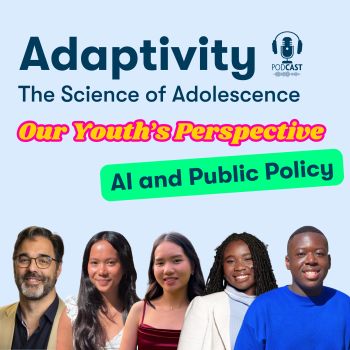
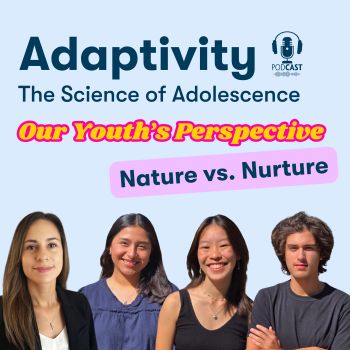
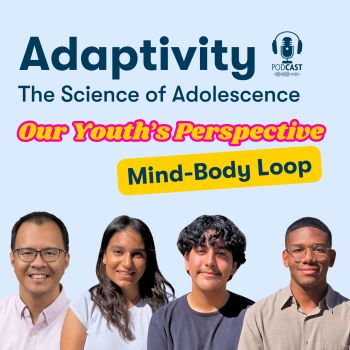
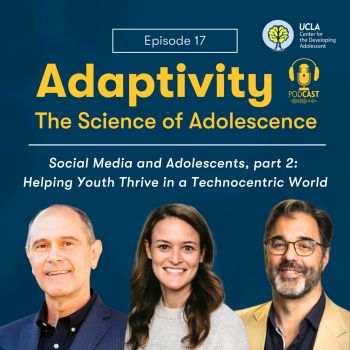
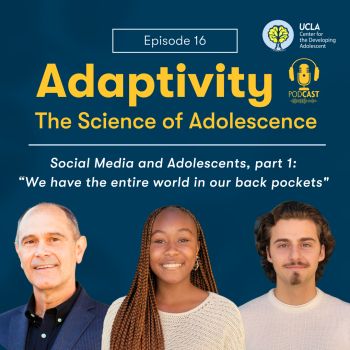
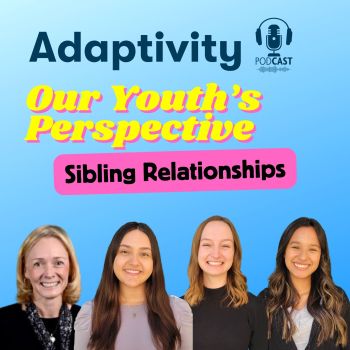
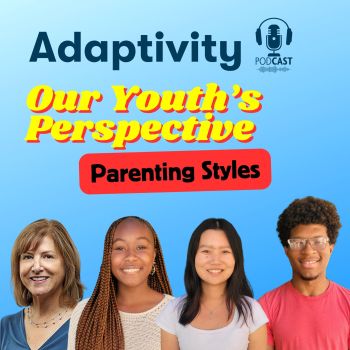

_350_350_80_c1.jpg)

